Contemporary review originally published in Road & Track Sports & GT Cars 1998
I was on the way home from taking my 14-year-old daughter to music camp at Mansfield University when I stopped at a Texaco station in the little burg of Wysox, Pennsylvania. Earlier, my wife had looked at the Porsche Boxster and said I’d never get all of Katie’s gear in and suggested that I take our Ford Aerostar instead. Not bloody likely.
Drive a minivan on U.S. Route 6 through Pennsylvania’s Endless Mountains—think of how the Keystone State’s rolling hills look to the teamster on a Conestoga freighter—Instead of Porsche’s new Boxster? I’d find a way to get her baggage in. I’d make it fit.
Actually, it surprised even me. Her trumpet case dropped to the bottom of the front compartment as if it were custom fit. Her bed linens and a large sports bag with a week’s worth of summer clothes went in above that. Around back at the rear compartment, her full-size Fender acoustic guitar slid in with room to spare for a backpack full of music books and a ditty bag of miscellaneous girl stuff. The little teddy bear would ride, not in the trunk, but upfront with us. Hey, do I look like Mafia to you?
Odd to spend so many words on luggage space in a sports car, one might think. Wrong. If it had had any less, I’d have been driving a truck. As I said, don’t wanna do that. So with accoutrements aboard and an I-told-you-so issued, Katie slipped into the passenger seat and I behind the wheel. And although the convertible top has a funky Fifties look when raised, of course we lowered it. A single release and one button and the semi-rigid top folds underneath a hard tonneau that covers most but not all of the cloth. No matter. It looks good, and better yet, doesn’t take away any trunk room. I know I’m obsessing about the front and rear trunks, but it’s something that makes the Boxster a truly usable car.
Anyway, like Thelma and Louise – well, make that Herman and Louise – we hit the road. The Boxster has mesh-filled roll hoops behind the headrests and a clear plastic wind deflector fits between them to reduce buffeting, but ball caps are still a good idea. And boy did we look good. A Boxster will do that for you. Its styling is traditional only in a Porsche sort of way. It borrows its theme from the late-‘40s Porsche 356 prototype and the 1953 550 Spyder—updated, naturally, to modern standards. I see some Cisitalia in the rear fenders, budding tailfins almost, that lend character (and trunk space!) to the rear of the car. Smooth lines and an aerodynamic under tray contribute to a 0.31 drag coefficient with the top raised, remarkable for a soft-top nonetheless. A rear spoiler rises at 75 mph and lowers again at 50 mph, and automatic tattletale while we drove the lightly traveled upper reaches of the Pennsylvania Turnpike’s Northeast Extension. The road and the Boxster are perfectly matched for vistas of purple mountains’ majesty.
The tollbooths I could do without but, aha, they did give another excuse to run the Boxster through its gears again. Porsche’s innovative Tiptronic automatic, with its steering-wheel-mounted miniature shifting “paddles,” is optional, but I’m glad the car I drove had the standard five-speed manual. It is a delight to use, light and precise, and brings the flat-six howling pass 5,000 rpm on its way to a redline of 6,600. Despite the untraditional-for-Porsche water cooling, the 2.5-liter flat-6 has an unmistakable Porsche sound. It is undeniably a Porsche engine. The forged-steel crankshaft runs in seven main bearings held by aluminum/cast-iron bearing shells for temperature-independent clearances and reduced noise. Connecting rods are forged steel and had “broken” big ends that fit precisely when bolted together. Water cooling of the alloy engine block, which splits Porsche -like down the center, includes the cylinders as well as the heads.
The engine has integrated dry-sump lubrication, meaning there’s an oil sump separate from the crankshaft chamber, but not, as on the 911, the detached oil tank with the attendant hoses, tubes and clamps and so forth. An oil/water heat exchanger mounted on the engine block helps raise temperature when the engine is cold and cools the oil engine warms up. Engine oil level is displayed by the gauge on the instrument panel at every engine startup.
The Bosch Motronic M5.2 engine-management system controls the electronic fuel injection and the distributorless six-coil ignition. Although Porsche’s air-cooled boxer engines require dual sparkplugs, the Boxster engine has a single plug centered in the four-valve combustion chamber. The heads, by the way, are identical and fit either left or right side. Variable cam timing increases torque at low rpm and power at high rpm. Controlled by the engine management system, the intake is advanced by 7.5 degrees at low rpm. Engineers have made this all-new engine shorter by using an auxiliary shaft that’s chain-driven off the crankshaft. This shaft then drives the camshafts via chains running in the room left by the piston offset. The exhaust exits through two catalytic converters to a single outlet centered under the rear as of Porsches of yore.
Alas, you can’t see much of the engine without taking the car apart for putting it on a lift; there is no hood to open to show off the engine to the guys. The only way to catch a glimpse is to open the tonneau cover with the top half-lowered, and then only a portion of the engine is visible. As on the now-defunct Toyota Previa, the engine lies flat and beneath everything. The midship position gives a low polar moment and does not have the pendulum effect of the 911’s Beetle-like rear engine, but it hides the engine. There are service hatches that can be removed for maintenance—for what little is required—and the dipstick and oil filler are in that guitar-swallowing trunk. Porsche 911 engines have been hard to see for years, buried under oil coolers and such, but this change eliminates the traditional male bonding ritual of standing around with the hood open and saying things such as, “Yup, sure is an engine in there.”
Well, how about better bonding through acceleration? The Boxster’s 201-bhp six in the 2,822 pound car produces a zero-60-mph time of 6.1 sec and turns the quarter-mile in 14.7 sec at 93.2 mph. That’s impressive enough, but the Boxster feels even better accelerating in the mid-range, such as in passing on the two-lane Route 6. The long sweepers didn’t tax the Boxster’s cornering capacity—we measured 0.9 3g on the skidpad—though we know from experience that the set up favors safe and stable understeer at the limit. Porsche has routed intake from the scoop on the left flank—the right-hand scoop fan cools the engine compartment, and twin radiators and brake cooling ducts occupy the holes in the front bumper—so that eerie bawl of the engine is trumpeted mere feet from the driver’s left ear. A driver any soul at all will take that engine over 5000 rpm as often as possible.
Of course, doing that often entails going fast, something the Boxster does easily and, from the driver’s seat, with a great deal of subtlety. It’s easy to look down at the speedometer and see grossly hyperlegal speed. But then, the speedometer isn’t easy to read. Befitting a true sports car, the panel is dominated by a centrally mounted and easily readable tachometer. Speedometer, however, is a wedge-shaped device with a huge range, minimal calibration and a relatively fat needle. Good luck. Better use the discrete digital speedometer under the tach. Thank goodness the Boxster has 4-wheel discs with 4-piston aluminum-alloy monoblock fixed calipers and ABS, which is the long way of saying the Boxster stops right now.
But ensconced in the Boxster’s standard leather-trimmed buckets (side airbags are new for 1998), the miles—except for a stop to enjoy a shared 20-piece McNugget snack—were rapidly accomplished. A quick unload, a hug and a kiss, and I was on my way home alone. It was then that I stopped at the Texaco in Wysox. Splashing 93 octane into the 15.3-gal. tank through the fuel filler in the right front fender, positioned much like the 911’s but on the other side, I noticed the two boys. About 10 or 12 years old, they had ridden up on bicycles and stopped, and without dismounting watched me gas up the Porsche. Possibly this was the first Boxster in Wysox, most likely the first they had ever seen. From the looks on their faces, I might as well have been Elvis putting dilithium crystals in the starship Enterprise. Nah, the Porsche was more exciting. They didn’t move the entire time I was there. So when I left, I revved the engine to redline in first gear and gave it a shot in 2nd – just for the boys, you understand. Something to tell their friends. I could have shown them the trunk room, but I doubt if they’d have been as impressed.
The original photography for this review was by ace shutter wrangler Guy Spangenberg.





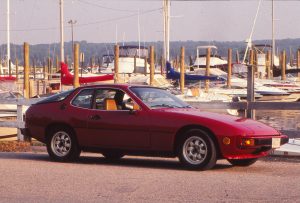
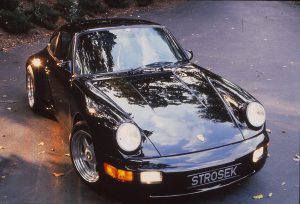
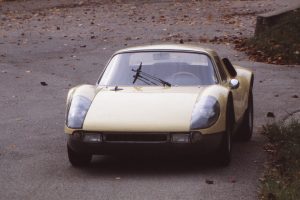
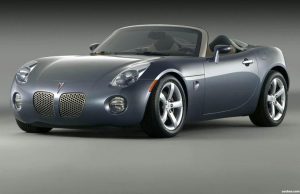
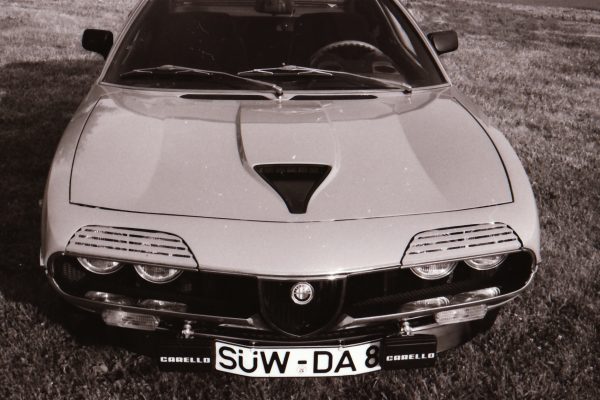
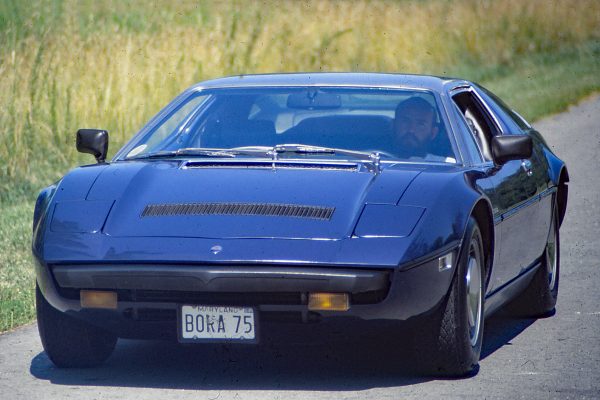

What Do You Think?
You must be logged in to post a comment.